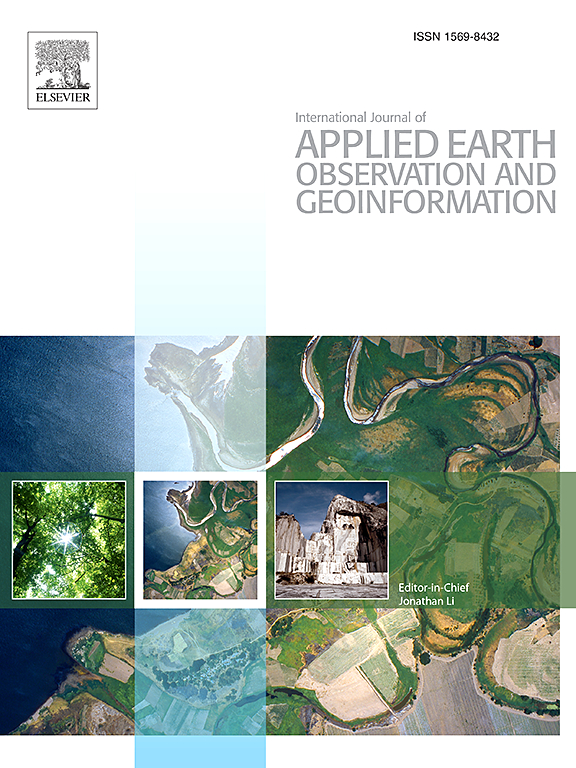Long and short-term perspectives on space–time landslide modelling
IF 7.6
Q1 REMOTE SENSING
International journal of applied earth observation and geoinformation : ITC journal
Pub Date : 2025-06-24
DOI:10.1016/j.jag.2025.104694
引用次数: 0
Abstract
Data-driven models applied to landslide prediction have historically been mostly confined to the pure spatial context, as per landslide susceptibility requirements. Its standard definition assumes that the occurrence probability is conditional on a broad set of static predictors and that in turn, it does not change with time. To find data-driven models where the probability is temporally dynamic, we need to explore early-warning systems. However, these models traditionally rely only upon rainfall (intensity-duration characteristics) and neglect influences from terrain, geological, and other thematic contributors. Space-time data-driven models can incorporate both static and dynamic predictors, allowing for a rich description of the landslide process and for the susceptibility to change both in space and time. In this work, we present an overview of potential variations of space–time landslide susceptibility models for an area in Chongqing, China. In doing so, we present space–time models suited for long-term (yearly or seasonal models) or short-term (monthly or daily) planning. Therefore, the manuscript presents elements of a review as well as elements of methodological innovation. The method of choice used across all the experiments corresponds to a Generalized Additive Model, whose structure will account for linear, nonlinear, spatial, and temporal effects.

时空滑坡模型的长期和短期展望
应用于滑坡预测的数据驱动模型历来主要局限于纯粹的空间背景,以满足滑坡易感性要求。它的标准定义假设发生概率取决于一组广泛的静态预测因子,并且反过来,它不随时间变化。为了找到概率是时间动态的数据驱动模型,我们需要探索早期预警系统。然而,这些模式传统上只依赖于降雨(强度-持续时间特征),而忽略了地形、地质和其他专题因素的影响。时空数据驱动的模型可以结合静态和动态预测,允许对滑坡过程和对空间和时间变化的敏感性进行丰富的描述。在这项工作中,我们概述了中国重庆地区滑坡时空敏感性模型的潜在变化。在此过程中,我们提出了适合长期(年度或季节性模型)或短期(月度或每日)计划的时空模型。因此,手稿呈现了回顾的要素以及方法论创新的要素。在所有实验中使用的选择方法对应于一个广义可加模型,其结构将考虑线性、非线性、空间和时间效应。
本文章由计算机程序翻译,如有差异,请以英文原文为准。
求助全文
约1分钟内获得全文
求助全文
来源期刊

International journal of applied earth observation and geoinformation : ITC journal
Global and Planetary Change, Management, Monitoring, Policy and Law, Earth-Surface Processes, Computers in Earth Sciences
CiteScore
12.00
自引率
0.00%
发文量
0
审稿时长
77 days
期刊介绍:
The International Journal of Applied Earth Observation and Geoinformation publishes original papers that utilize earth observation data for natural resource and environmental inventory and management. These data primarily originate from remote sensing platforms, including satellites and aircraft, supplemented by surface and subsurface measurements. Addressing natural resources such as forests, agricultural land, soils, and water, as well as environmental concerns like biodiversity, land degradation, and hazards, the journal explores conceptual and data-driven approaches. It covers geoinformation themes like capturing, databasing, visualization, interpretation, data quality, and spatial uncertainty.
 求助内容:
求助内容: 应助结果提醒方式:
应助结果提醒方式:


